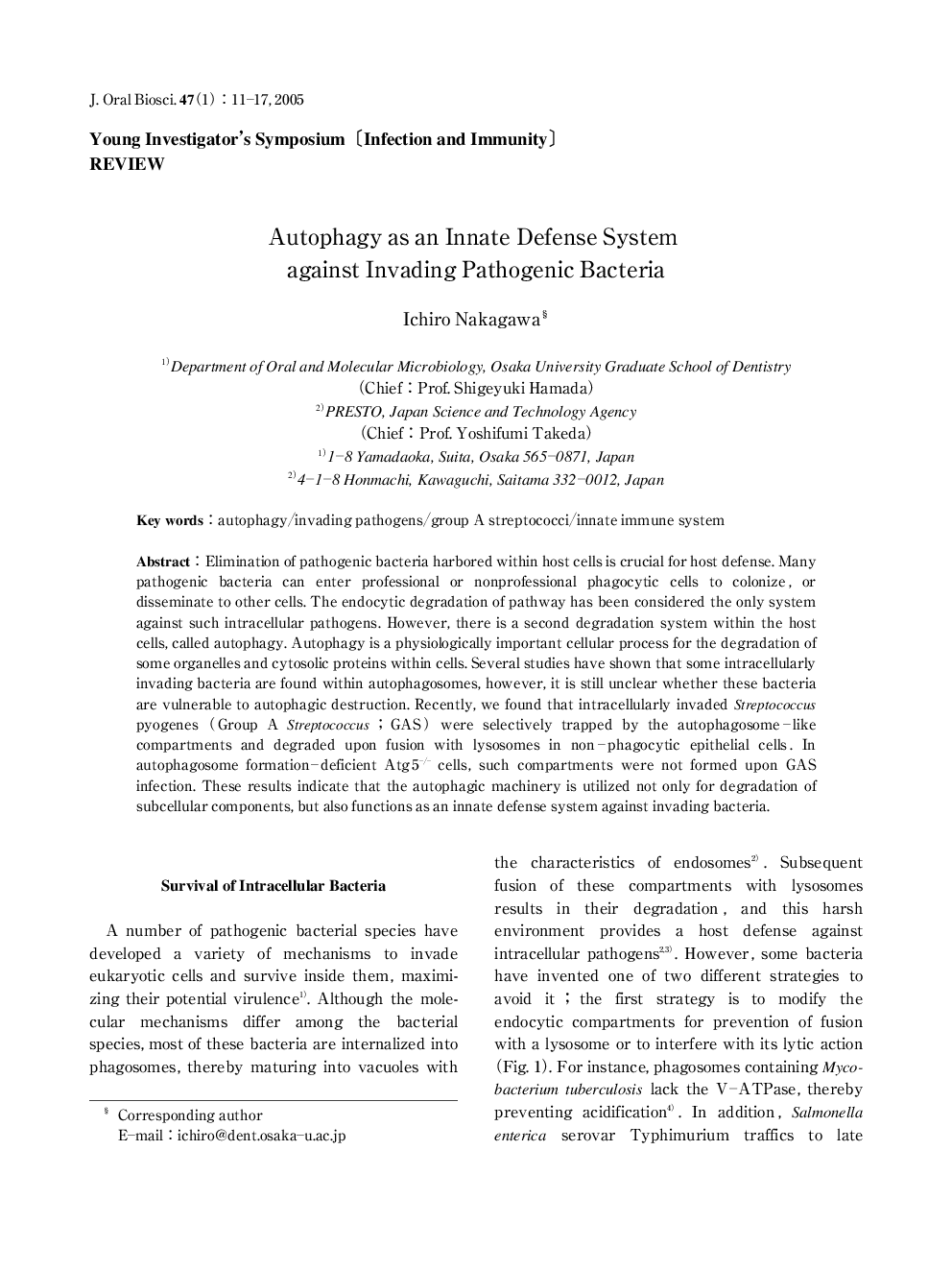| Article ID | Journal | Published Year | Pages | File Type |
|---|---|---|---|---|
| 9103404 | Journal of Oral Biosciences | 2005 | 7 Pages |
Abstract
Elimination of pathogenic bacteria harbored within host cells is crucial for host defense. Many pathogenic bacteria can enter professional or nonprofessional phagocytic cells to colonize, or disseminate to other cells. The endocytic degradation of pathway has been considered the only system against such intracellular pathogens. However, there is a second degradation system within the host cells, called autophagy. Autophagy is a physiologically important cellular process for the degradation of some organelles and cytosolic proteins within cells. Several studies have shown that some intracellularly invading bacteria are found within autophagosomes, however, it is still unclear whether these bacteria are vulnerable to autophagic destruction. Recently, we found that intracellularly invaded Streptococcus pyogenes (Group A Streptococcus; GAS) were selectively trapped by the autophagosome-like compartments and degraded upon fusion with lysosomes in non-phagocytic epithelial cells. In autophagosome formation-deficient Atg 5-/- cells, such compartments were not formed upon GAS infection. These results indicate that the autophagic machinery is utilized not only for degradation of subcellular components, but also functions as an innate defense system against invading bacteria.
Related Topics
Life Sciences
Biochemistry, Genetics and Molecular Biology
Clinical Biochemistry
Authors
Ichiro Nakagawa,
